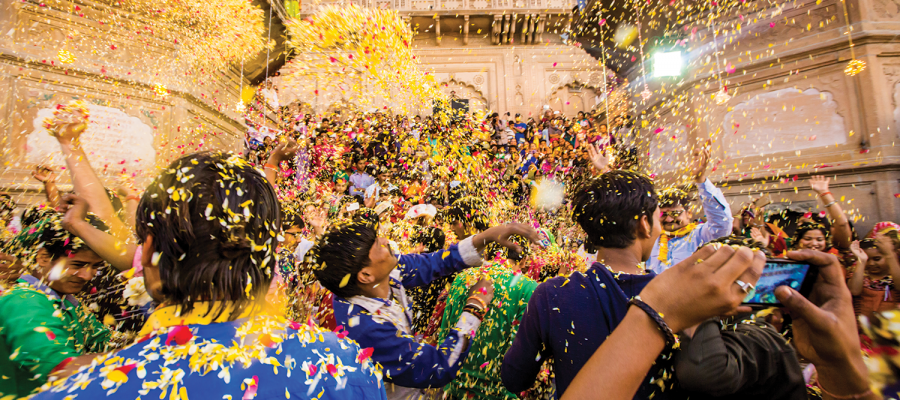Thank you for those who participated in the first month of the Life around the World Contest!
In last month’s photo, artists perform the fire dragon dance during a celebration for Spring Festival at Wuhan Happy Valley, Hubei, China. Dragons are a symbol of China and are believed to bring good luck. This photo is featured on the Beginner level of Life Second Edition.
As a reminder, here are the details about the contest:
Each month, we will release a photo from a cover of Life Second Edition on the In Focus Blog.
We want you to submit your best guess of where in the world this photo was taken. Try to tell us as much as you can about the photo!
Please submit your best guess in the comments section below.
The first person who guesses correctly will win a National Geographic prize and a student book from the second edition of Life! Each month we will reveal the previous month’s photo location on the In Focus blog.
Here is this month’s photo from the Elementary level of Life Second Edition (British English). Let us know your best guess below!

To learn more about the new edition of Life or to request a sample, please visit NGL.Cengage.com/Life
Author: National Geographic Learning
National Geographic Learning’s mission is to bring the world to the classroom and the classroom to life. With our English language programs, students learn about their world by experiencing it. Through our partnerships with National Geographic and TED, they develop the language and skills they need to be successful global citizens and leaders.



This photo is happy new year in India.
It looks like a cultural event/celebration/carnival with flower pedals or confetti thrown at people or visitors/tourists. It could be a celebration for spring in South America or Mexico!
Banke Bihari temple in Vrindavan, Uttar Pradesh, India
I think it is the celebration of the Holi festival in India (could be Vrindavan or Mathura). Holi is celebrated to mark the beginning of spring (1st or 2nd March, varying from year to year as it’s observed on the full moon day of Phagun (12th) month in Hindu calendar). It is a festival of colours. It is believed that during the 4-th- 7th centuries it was performed by married women to pray for happiness and health of their families. In the night before Holi, people gather in front of a bonfire and pray for the destruction of internal evil spirits. The next day, they start the carnival, sing, dancing and playing drums and other musical instruments in the streets.
or Thousands of Hindu widows, shunned and ignored by their own families, marked the Hindu spring Festival of Colors in a event organized by Indian NGO Sulabh International.
This photo was taken in some festival in India.
That is the picture of celebrating the “Festival of Colours”, or Holi in India. It is also celebrated as a thanksgiving for a good harvest. Holi also celebrates the triumph of good over evil.
The Holi Festival’s history stems from the legend of a female demon and her brother, who believed was the ruler of the universe. His son, however, followed Vishnu, the protector of the universe, turning his back on the demon. The demon siblings plotted to kill the sun, but failed and died after Vishnu protected the son, who in turn became the king.
Amid vibrant bursts of color, a troupe of dhol players — a traditional wooden drum played in South Asia — dance around and splash each other with water and powder colored red, yellow, blue and green. The scene depicts the classic Holi traditions of family and friends coming together to laugh, dance, and feast. Each color also carries a meaning. Red symbolizes love and fertility; yellow is the color of turmeric, a powder native to India and used as a natural remedy; blue represents the Hindu God Krishna; and green is for new beginnings.